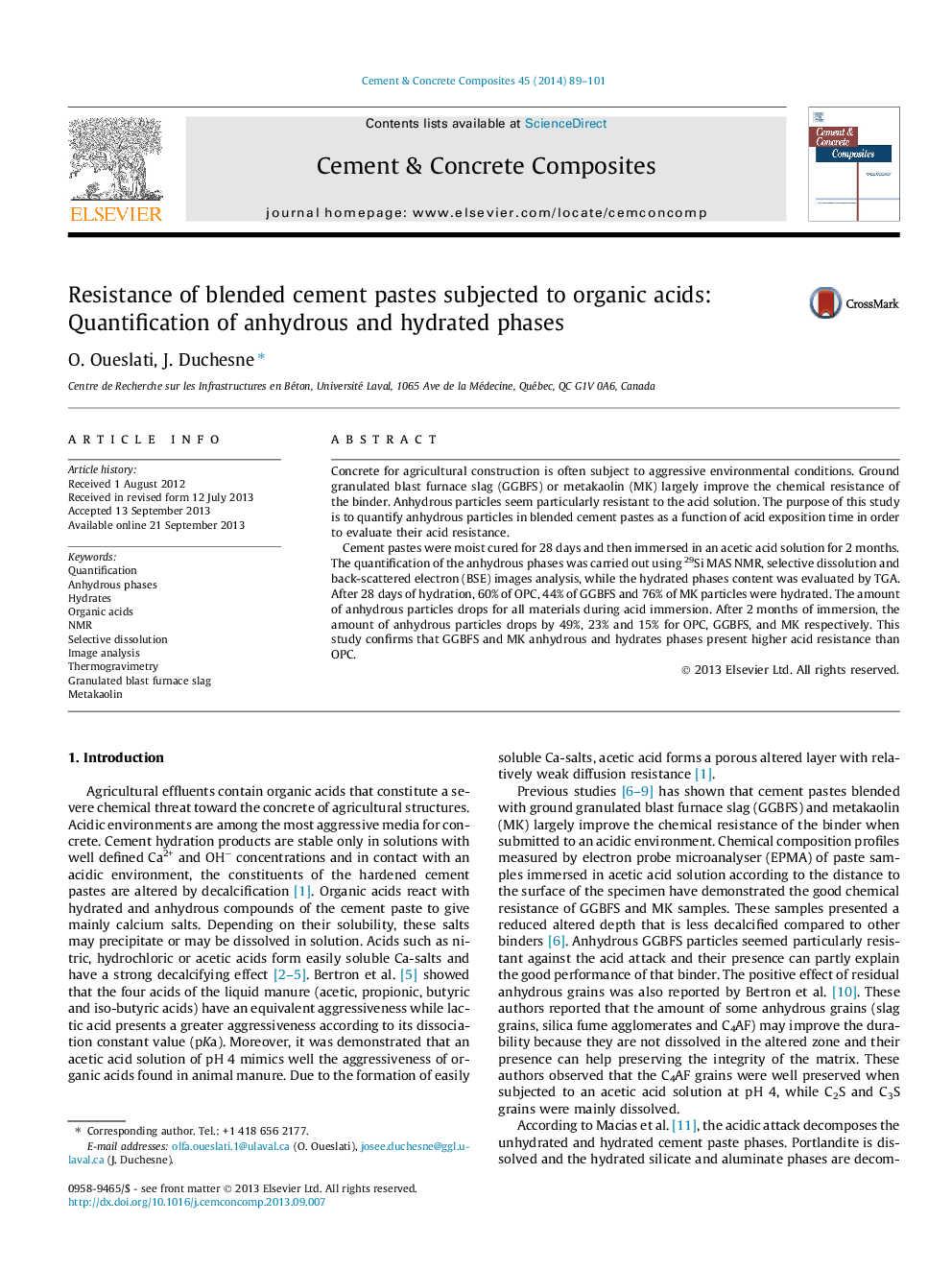| Article ID | Journal | Published Year | Pages | File Type |
|---|---|---|---|---|
| 1454709 | Cement and Concrete Composites | 2014 | 13 Pages |
Concrete for agricultural construction is often subject to aggressive environmental conditions. Ground granulated blast furnace slag (GGBFS) or metakaolin (MK) largely improve the chemical resistance of the binder. Anhydrous particles seem particularly resistant to the acid solution. The purpose of this study is to quantify anhydrous particles in blended cement pastes as a function of acid exposition time in order to evaluate their acid resistance.Cement pastes were moist cured for 28 days and then immersed in an acetic acid solution for 2 months. The quantification of the anhydrous phases was carried out using 29Si MAS NMR, selective dissolution and back-scattered electron (BSE) images analysis, while the hydrated phases content was evaluated by TGA. After 28 days of hydration, 60% of OPC, 44% of GGBFS and 76% of MK particles were hydrated. The amount of anhydrous particles drops for all materials during acid immersion. After 2 months of immersion, the amount of anhydrous particles drops by 49%, 23% and 15% for OPC, GGBFS, and MK respectively. This study confirms that GGBFS and MK anhydrous and hydrates phases present higher acid resistance than OPC.
